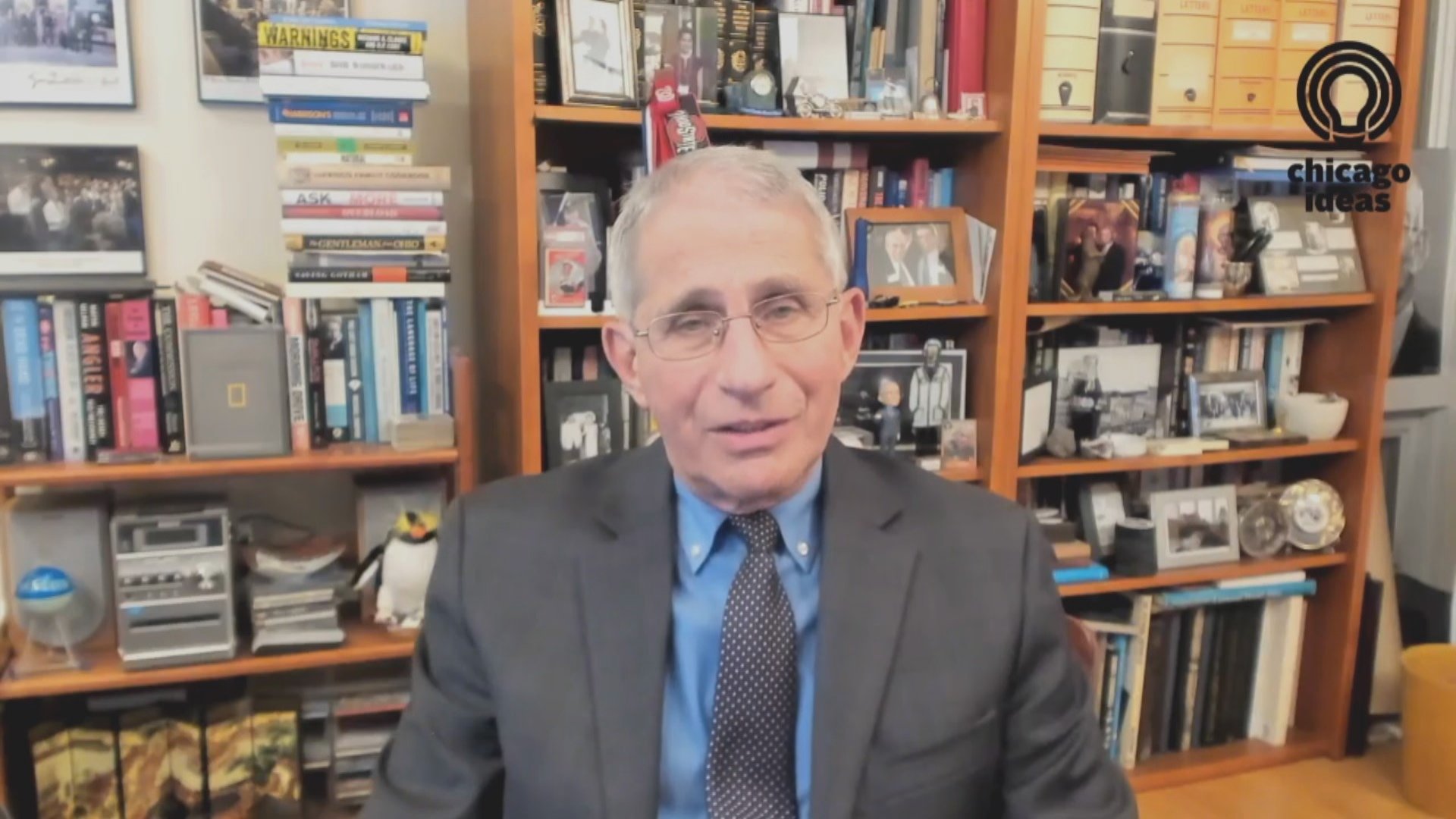
Cases of the coronavirus have risen and fallen at different times around the country. Politicians have debated the response to the pandemic, as states have developed their own paths forward.
One man has consistently been the country’s voice of reason, Dr. Anthony Fauci, director of the National Institute of Allergy and Infectious Diseases.
Thanks to our sponsors:
Wednesday night, he was interviewed for Chicago Ideas, which typically hosts a week of programming this time of year as Chicago Ideas Week. This year, the weeklong event has gone virtual.
Below, an condensed and edited interview with Fauci that begins with him addressing the current status of coronavirus in the country. (Want to see the whole thing? Watch it here.)
Fauci: We never got back down to a baseline that was a low acceptable baseline. And then when we tried to so-called open up country and open up the economy, we put forth a group of guidelines which were not consistently followed from state to state. And when that happened, we started to see surges to the point that last Friday, there were 83,000 cases in a single day.
And if you look at the map now of the country, we’re seeing more than 30 states, closer to 40 states that are showing upticks in the number of cases. So now as we’re entering the cooler months, in middle of the fall, and soon, the cold months of the winter, we're in a very bad position, when you think about where we're going, because the trajectory is going up. And then compound that with the holiday season coming, we have to do something different, because we are clearly going in the wrong direction.
Friedman: How do you make the case to people that we have to hunker down and ride this out?
Fauci: You know it's going to be a difficult message, because you brought up a very important point: We’ve been going through this literally since the end of January, beginning of February and then intensively as we went into the very early spring. There is COVID fatigue in this country and it is understandable. So the message that we have to do, is to say to the people of this nation, that we understand the stress and the strain.
But this will end, we will have a vaccine within a reasonable period of time. we will gradually be able to lessen, a bit, the constraints of public health restrictions that we have. There are things that we can do to just hang in there, because it will get better.
Friedman: what will you be looking for, what do you need to see in a potential vaccine?
Fauci: What I'm going to be looking at is data, the raw data to show whether or not it is effective. I believe, and I'm cautiously optimistic, that it will be, and we will get a positive answer, and at least one maybe two more of the vaccines, because there are six of them in play right now in the United States, five of which are in advanced clinical trial, which we call phase 3. Two of them started phase 3 on July 27, which the reason why I can that say by time we get to end of November, the beginning or middle of December, we should know whether we have a safe and effective vaccine.
Friedman: Under what circumstances do you think schools should return to in-person learning? And, also, what of the mental and social impact that not being in school has on kids and the learning lost, the deepening inequity?
Fauci: I think what you just said just a moment ago is absolutely critical to what we need to do, and that's the reason why I say, our default position should always be to try as best as we possibly can to get children back in school because of the unintended negative spinoff consequences of what happens to children and families when you keep them out of school, for their mental health, their physical health, their learning, as well as the disruption of the family.
Having said that, when you’re dealing with a situation where you have a great deal of variability in the amount of infection in a particular community, you have to fashion your decision and what you do to mitigate against that based on how bad infections are in your community.
However, there may come time or a place, or a location, where there’s so much infection in the community, that you might want to just hold off getting the children back, and doing it mostly by virtual. But, as I want to repeat again: the default position should always be to try as best as you can to get those children back to school.
Friedman: What does the end of this pandemic look like, whenever that is, later in 2021, 2022? What do we all need to see and what will our lives be like?
Fauci: It’s gonna be a gradual return to normal that’s going to be facilitated out of the necessity of a vaccine. So, we will get vaccine, as I mentioned, that’ll start to be deployed likely in the beginning of 2021. People are not gonna all get vaccinated at once. And depending on how effective the vaccine is, and what proportion of the population decide they want to get vaccinated, that will then, (happen) probably over a period of several months. As we get into the third or fourth quarter 2021, there will be a gradual relaxing of the public health restrictions.
Follow Brandis Friedman on Twitter @BrandisFriedman
Thanks to our sponsors:
Thanks to our sponsors:
"current" - Google News
October 30, 2020 at 08:39AM
https://ift.tt/34FRjUg
Dr. Anthony Fauci on Current COVID-19 Situation, Vaccine Prospects - WTTW News
"current" - Google News
https://ift.tt/3b2HZto
https://ift.tt/3c3RoCk
Bagikan Berita Ini














0 Response to "Dr. Anthony Fauci on Current COVID-19 Situation, Vaccine Prospects - WTTW News"
Post a Comment